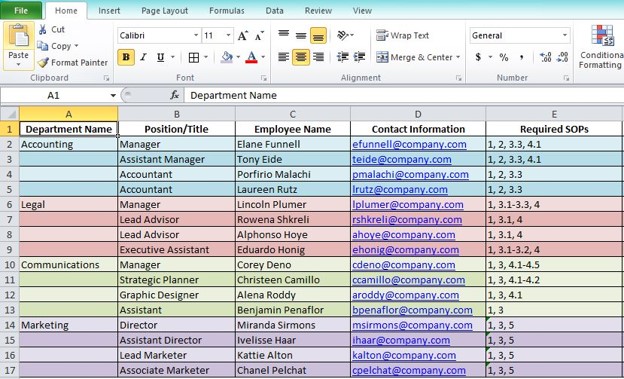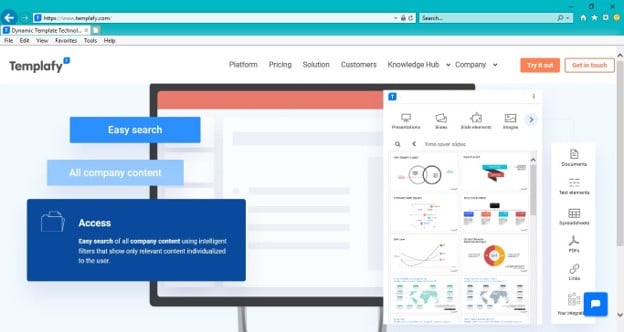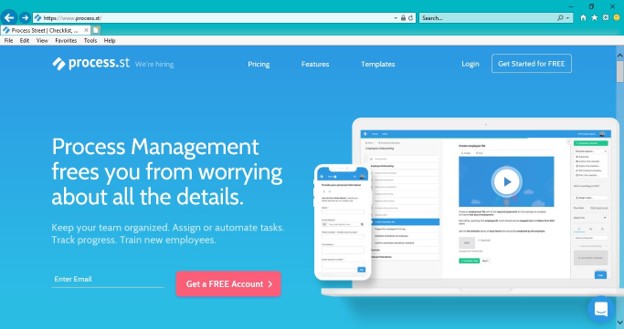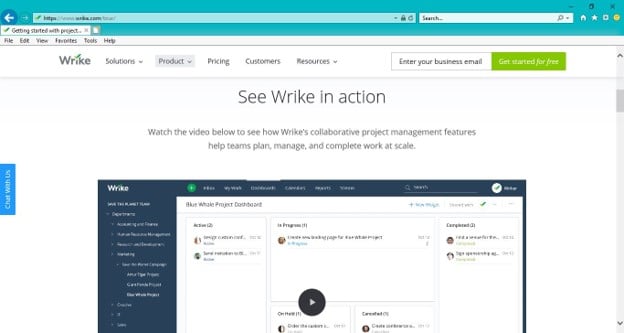
Best Practice for Distributing SOPs
BEST PRACTICE FOR DISTRIBUTING SOPS
So, your standard operating procedures (SOPs) are ready to go—you’ve written them, had them reviewed and tested, and incorporated feedback. Now all you have to do is distribute them. That should be the easy part, right?
Well, you’re probably dealing with a lot of SOP content, and it can be hard to know exactly who needs to receive what information or how to get it to them in an efficient manner.
Here are a few things to know and do to make your SOP distribution organized and efficient (and headache free).
Know When SOPs Need Distributing
First, it’s useful to know when SOPs need distributing. (Hint: it’s not just when something new has been written).
SOP distribution needs to happen for several situations, including newly written SOPs, changes/updates to existing SOPs, new hire training, and scheduled training. SOP access is also required for things like general employee reference, issue resolution, and updating training materials.
Also, people need to have consistent access to pertinent information. It shouldn’t take complex chains of communication and approval processes occurring over several days for employees to get the information they need.
Know Who Needs to Receive/Have Access to Which SOPs
Obviously, different employees will require access to different SOPs depending on the content. Remember, not everyone needs to see everything. (Accountants don’t need to read detailed SOPs about operating forklifts.)
Updated or newly written SOPs may need to go to every employee or only to particular departments and/or specific employees.
New hires need company-wide SOPs that apply to all employees, like human resources SOPs on time keeping and safety procedures, as well as any SOPs specific to their departments and/or positions.
Scheduled training can require a range of different SOPs depending on the type of training. For example, company-wide review sessions will likely require more than quarterly internal department trainings.
Having different SOP requirements for different people requires you to keep track of information, such as:
- Every department within the company
- Every position within each department
- Every SOP cross-referenced with its recipient departments and/or positions/titles
- Every individual employee cross-referenced with his/her position/title
- Every individual’s contact information
Yeah, that’s a lot of data to keep organized and current, let alone put to use in order to distribute all SOPs to the correct people in a timely and efficient manner.
While it may be tempting to just send everything to everyone and be done with it, completing heavy admin/data input early on can significantly improve employees’ information retention and compliance, and reduce your workload in the long run.
Thinking about sorting through and organizing so many details can easily cause overwhelm (and nausea at the thought of the required admin). But never fear—where there’s a will to work smarter, there’s a way.
Utilize Technology to Organize This Information and Distribute SOPs
What’s the best solution for distributing SOPs in an efficient, reliable manner? Put technology, particularly data organization and automation, to work for you.
There are different options available to suit your needs and limitations, all of which depend on factors such as the size of your company, the amount and speed of company growth, budget/financial resources, the amount of SOP content, and the level of prioritization placed on SOP content management by the top decision makers.
Humble Beginnings – Necessity Is the Mother of Spreadsheets (and Tagging Systems)
Many SOPs contain an overall list of recipients at the beginning of the document— the typical “this policy applies to” section—but you need more specific information to make sure the SOPs get exactly where they need to go.
While it’s not an ideal or long-term solution, using a spreadsheet can be a useful place to start if you’re just starting to organize information and build a formal process. You can use a spreadsheet to store, sort, and export department, position/title, employee name, and contact information.

You can also include information about what SOPs each department and position/employee needs in your spreadsheet. A document tagging system can help with this part.
You can create and use a tagging system to label the SOP documents themselves with the recipient departments and employees/positions.
By adding metadata tags to your documents, you can quickly find the documents you’re looking for and easily cross-reference them with others documents and information. You can read more about creating and using a tagging system in our previous blog post.

To distribute the SOPs using this information, you can export contact information from the spreadsheet or, even better, create and use group email accounts like [email protected] and [email protected] so that a single message will go out to everyone added to that group.
Overall, this is a relatively crude system that should only be used as a starting point and upgraded to keep up with demand.
Moving on Up – Shared File Systems and Intranet
A step up from using email distribution is using a shared file system or an intranet (perhaps along with a tagging system). Shared file systems and intranets give all employees constant access to what they need.
You can create specific folders or pages with different access permissions in shared file systems and intranets. This way, you’ll know where the information for each department and/or employee goes, and distribution is as simple as placing the content in the system and, if necessary, granting access. In other words, this eliminates some of the cross-referencing work.
The Whole Enchilada – Specialized Systems/Software
Using a specialized kind of system/software can make storing, organizing, and using your employee and cross-referencing information and distributing your documents easier, faster, more user friendly, and more automated.
There are many different kinds of systems available, and each company’s needs determine which kind will work best for that company.
If you’re looking for a new system to start using, worry less about the names of the system (system name terminology is often used interchangeably and can quickly become confusing) and focus on functionality. DocuPhase’s 7 Features to Look for in an SOP Management System can give you an idea of what functionality features to pay attention to during your research.
In general, document management systems and SOP systems focus more on the creation and management of the documents themselves and help with things like document storage, editing, change tracking, version control, and user access.
Project management systems, on the other hand, are more process oriented while offering document management features.
An example of a document management system is Templafy. Templafy helps streamline and standardize document creation by storing documents and assets/content in one place.
According to their website, Templafy provides you with “full control of your document management ecosystem” and allows you to “distribute to employees in real-time from the cloud without the need for IT resources.”

To get an overview of some of the most popular document management systems available, check out articles like TechRadar’s Best document management software of 2019: DMS systems for managing files and more.
An example of an SOP system is Process Street. Process Street stores documents and assets and offers detailed task, workflow, and data capture functions. According to their website, you can use their system to “manage multiple organizations and teams,” “control who can edit documents,” and “make sure your employees only see what they’re supposed to.”

To find out more about popular SOP systems, you can read Predictive Analytics Today’s Top 13 Standard Operating Procedures (SOP) Software and other similar articles.
An example of a project management system is Wrike. Wrike offers many features including detailed task and workflow functions, document and asset storage, and version control. Some of its main focuses include communication and collaboration, both of which are important for efficient SOP distribution.

To find out more about popular project management systems, check out articles like Project-Management.com’s Top 10 Best Project Management Software & Tools in 2019.
These systems share many common features, and any of them used effectively can make distributing SOPs much easier and more automated, sustainable, and streamlined. You can store recipient information and documents in the same place, automate distribution and set up recipient alerts, and utilize workflow features and functions.
Success!
Distributing SOPs can be difficult task. However, with a little understanding of who needs what, organization of content and recipient information, implementation of set processes, and assistance from technology, getting the right SOPs to the right people can be less of a stressor and more of an SOP logistics win.
Related Content
- 1 Comment
Subscribe to Newsletter
- How Can SharePoint Be Used To Organize and Disseminate SOPs?
- Planning the Perfect Genealogy Research Trip: A Step-by-Step Guide
- From Silly to Awesome: How Words Change Meaning Over Time
- The Psychology of Font Choice: How Typography Impacts Content Engagement
- How to Distribute SOPs for Maximum Usability





One thought on “Best Practice for Distributing SOPs”
Great content! Super high-quality! Keep it up! 🙂